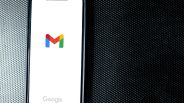Distance Technologies has created a prototype that converts a windshield into a full-color 3D heads-up display.
The prototype presented by the company established by Varjo's founders debuted last week at the 2024 Augmented World Expo in Long Beach, California, according to a report from The Verge.
An LCD panel with a parallax barrier projects clear pictures onto a windshield, creating a more spacious display than HUDs. Voice and gesture controls allow users to summarize content, simplify language, and test knowledge on the display.
More Room for Improvement
Despite its unique approach, the prototype has high expenses, limited brightness, and eye-tracking concerns. The display is just 100 nits bright, considerably below the 10,000 needed for outdoor visibility. The eye-tracking device has severe latency and often loses track, distorting images.
The technology is intriguing but needs major upgrades before being used in consumer automobiles.
Watch this video to see how Distance Technologies' impressive technology works:
While the business refines its software technology, co-founder and CMO Jussi Mäkinen said the parallax barrier hardware is a temporary solution. They focus on software-defined optics. While concealing details, CEO Urho Konttori said the prototype creates a semi-transparent 3D display on the driver's side of a windshield.
The technology from Varjo extended reality (XR) headsets employs a computer-generated 3D light field that mixes with reality. This provides per-pixel depth throughout the vision range, allowing maximum immersion without wearables.
Distance Technologies' device might incorporate situational analysis and geographical data. The technology creates "contextual AI," the next generation of popular XR experiences, using AI language models and search engines.
Read Also : Uber Locking New York City Drivers Out of Its App Over Pay Rule; Lyft Threatens to Do the Same
Urho Konttori said this technology might bring mixed reality without headsets or glasses to the mainstream. While waiting for substantial improvements, defense contractors and aviation businesses may explore the integration of Distance Technologies' XR tech into commercial and military cockpits and vehicles, according to VentureBeat. More commercial prospects should arise from subsequent iterations of the concept.
XR is Going to Be A Game-Changer
Extended reality encompasses technologies that build interactive and immersive virtual worlds. According to Forbes, XR applications are growing quickly, especially in smart building operations, maintenance, and large-scale infrastructure projects.
The engineering consulting sector can benefit from XR and digital innovation. Digital representations of physical surroundings, large data, and analytical insights help engineers understand and convey difficult situations and find better solutions.
Successful XR uses in consulting are few, yet they are valuable. One major advantage is enhancing user experience. For example, in huge building projects, XR may offer an augmented reality environment for clients to visually tour the final phases of design. This immersive experience helps form informed decisions, easing design, construction, and operational planning.
The Apple Vision Pro, launched in February, is the first iteration of this technology. With better technology and software, XR might become more pleasant and familiar to consumers beyond early adopters. The tech is expected to be used throughout industries in the coming decade.
Related Article : Tesla Issues Two Cybertruck Recalls Because of Defective Windshield Wiper, Trim Detachment Issue





